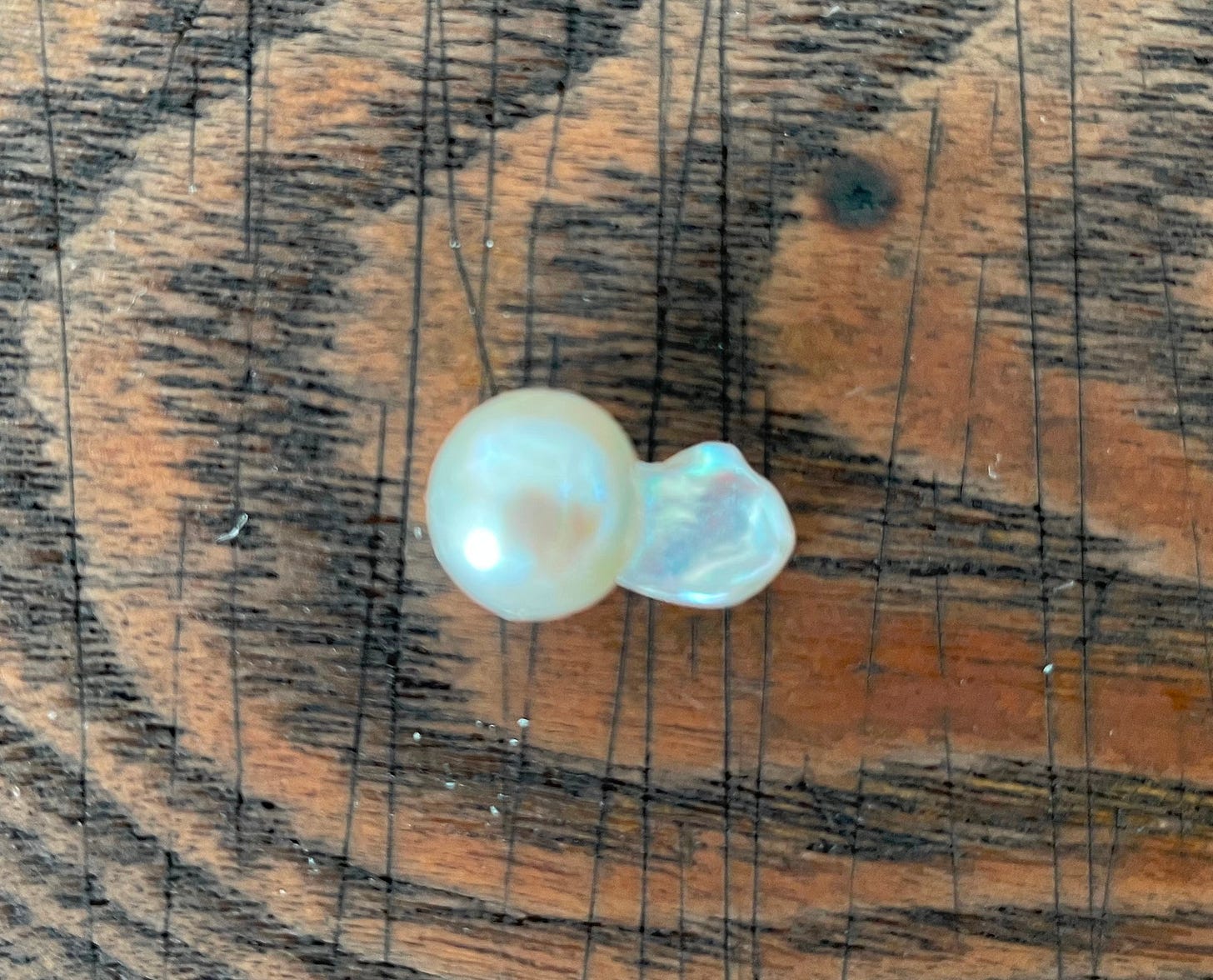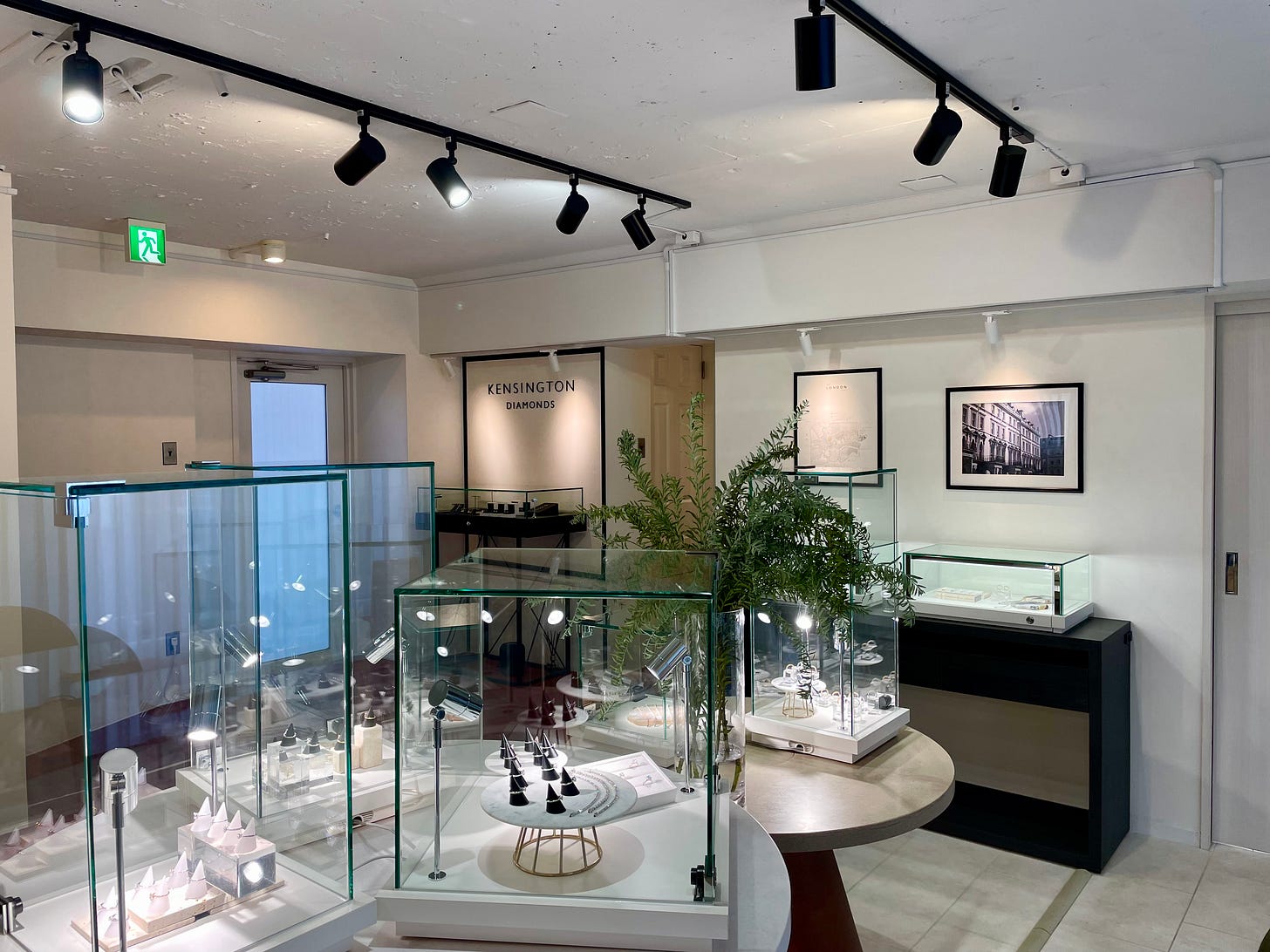The technique of jewelry making I follow so far is called “lost wax casting”. Through this technique, the jewelry maker creates a piece first in wax. The wax is used to create a mold, burned away, and the cavity is filled with metal.
There are some pretty insane designs I’ve seen artists create in wax. Aside from an incredible required level of time, skill, and practice, I’m learning that the design results are in part determined by the wax itself.
Different types of wax have different properties. As examples, waxes can range from malleable to brittle or with low to high melting points.
I’ve spent the past few weeks experimenting with different waxes.
In this moment, I favor two types: a very hard green wax that is good for precise designs and an almost plasticky wax that my mentor, Maya, gave to me and is good for making small curved forms. (When I told my other mentor from ileava jewelry, Georges, that I like the hard green wax he responded “you are so Japanese!” Apparently a lot of Japanese designers like the precision it allows.)
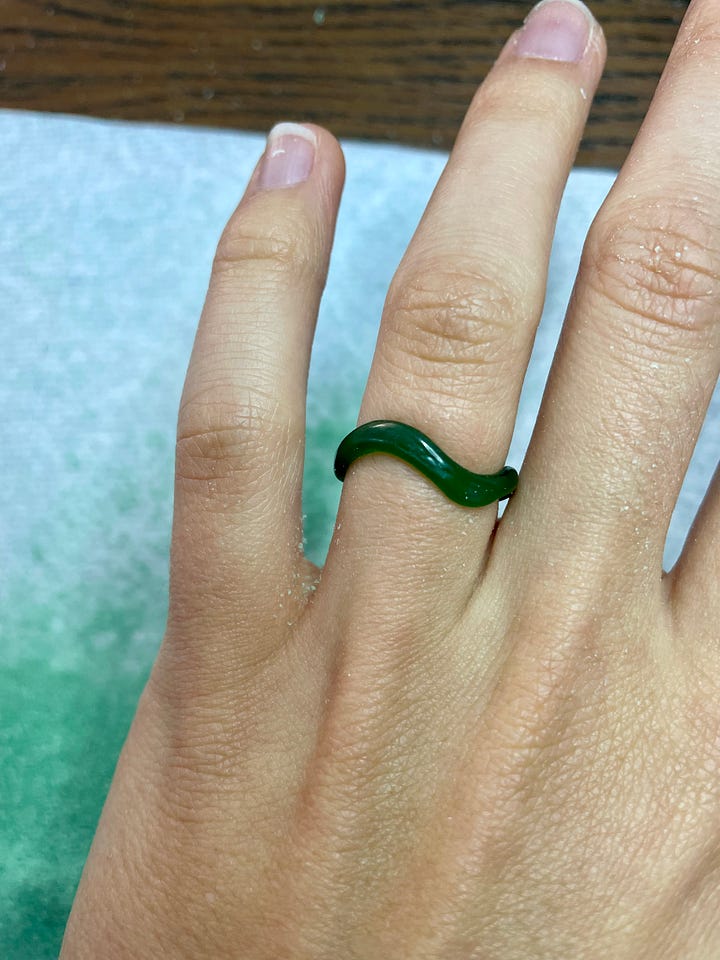
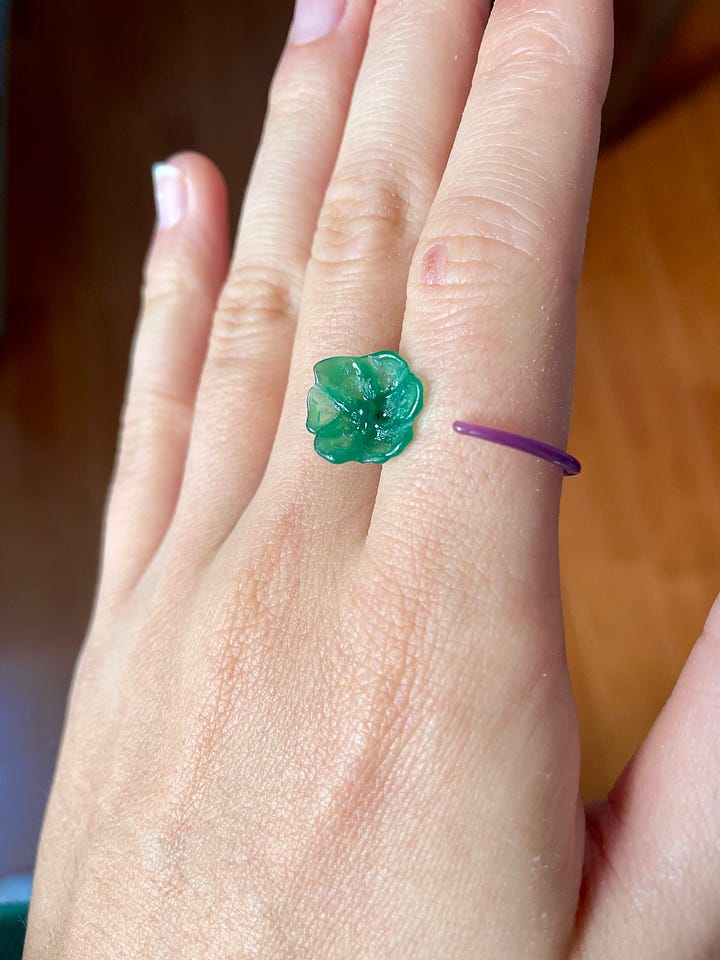
There is no “better” or “worse” wax. One artist’s favorite might be another’s least.
I am still testing new waxes to see what tools and techniques suit them and this past weekend I tried a unique, organic type of wax: Mitsuro Hikime.
Mitsuro Hikime
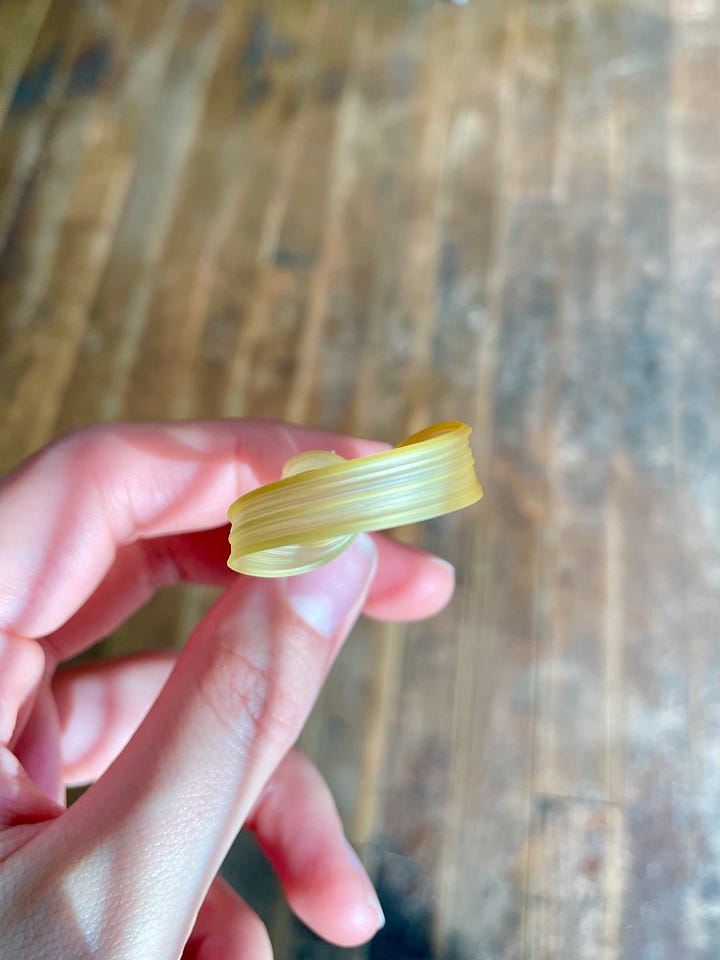
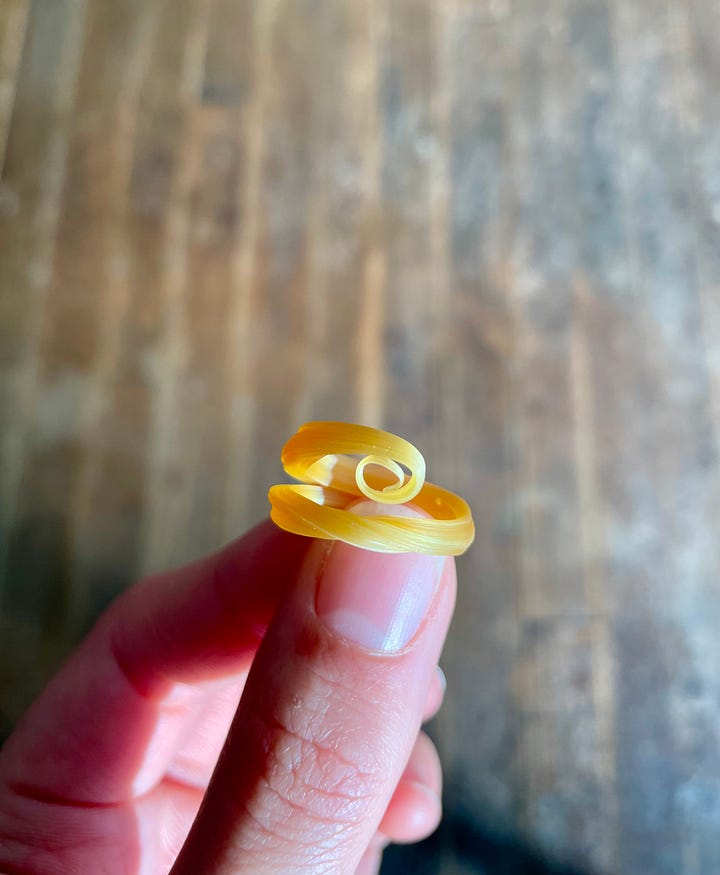
I spent Saturday afternoon at a small studio in northwest Tokyo taking a Mitsuro Hikime workshop. Mitsuro Hikime is a traditional Japanese wax for jewelry making made from beeswax and pine resin.
Unlike the other types of wax I’ve used so far, this one stretches almost like toffee once warmed. When folded and stretched, Mitsuro Hikime takes on its signature look with gorgeous lined ribbons throughout it.
The warmed wax is too soft to carve or create high precision designs, but is wonderful for forming gentle curves.
My instructor has worked with Mitsuro Hikime for the past 28 years(!!) so he gave me incredibly honed advice as you can imagine. He shared that usage of the traditional Japanese wax in jewelry making has declined significantly even in Japan, so he hopes to help keep the art form alive.
IJT
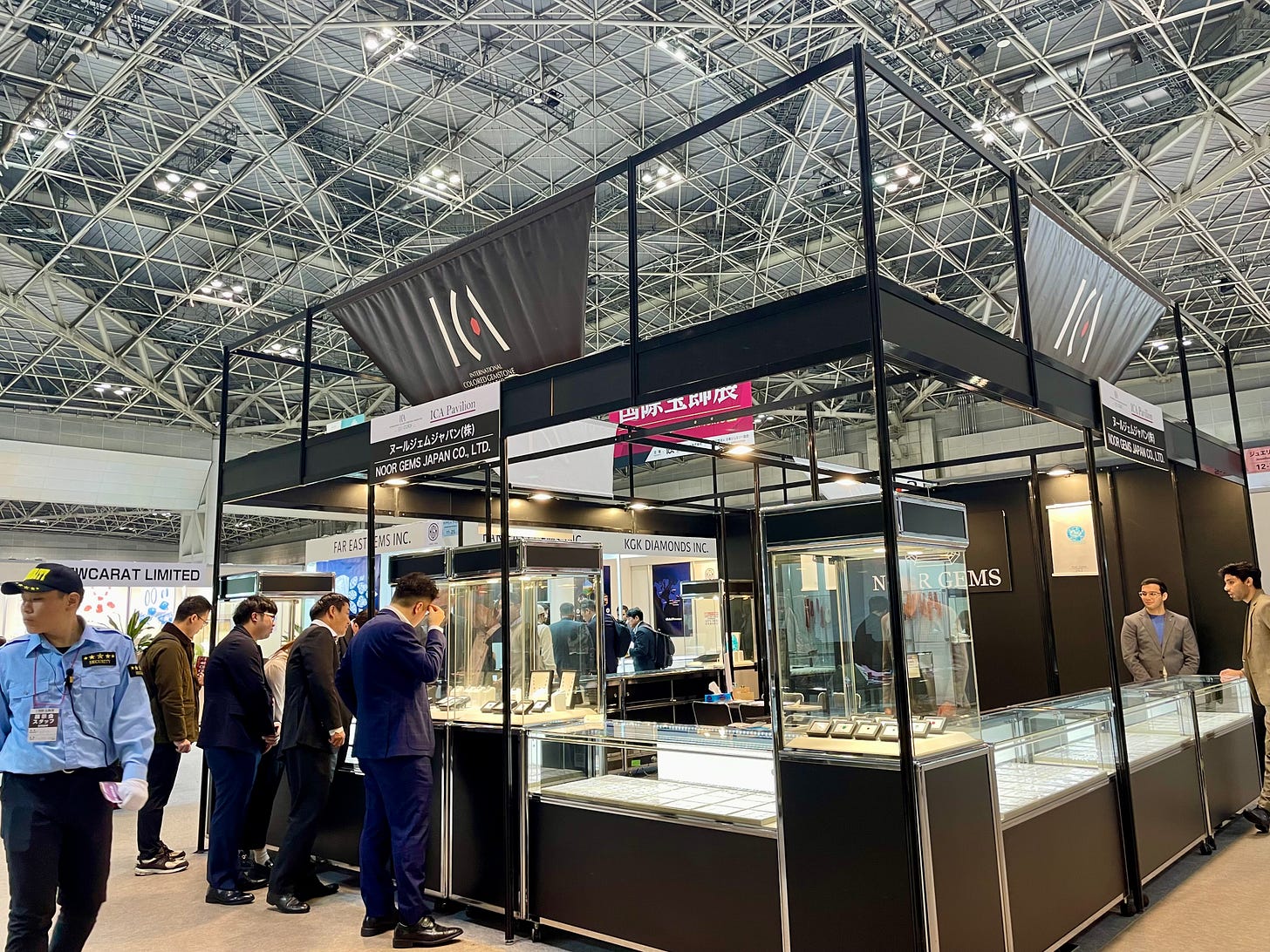
I spent a wonderstruck few hours wandering through IJT (International Jewelry Tokyo), a massive trade fair for the jewelry industry. Picture tens upon tens of thousands of diamonds, colored gemstones, pearls, jewelry pieces, and supplies.
Maya and Georges from ileava jewelry suggested in advance that I bring cash in case I want to buy anything. However, I somewhat naively didn’t realize that since the trade fair is geared toward wholesale and retail, not individuals, it would only be possible to buy in bulk. I should have brought way more cash!
On the plus side, my limited cash kept me on a strict budget. Trust me, I was frothing at the mouth to buy almost everything.
In the end, I left with a beautiful string of natural Akoya pearls that I will save for future pieces and a single Akoya pearl that looks like a fish. (Akoya pearls are saltwater pearls primarily cultured in the ocean waters of Japan. They naturally often occur in shades of white to grey with overtones of silver, blue, or pink.)
Kensington Diamonds
My boyfriend and I had an appointment at Kensington Diamonds, an engagement and wedding jewelry store in Tokyo specializing in diamonds.
Now before anybody gets any ideas, our appointment was for my research purposes only!! (Seriously, it really was. I hesitated to even make this joke in case it doesn’t translate well via writing!)
My boyfriend, Chris, is good friends with the couple that owns Kensington Diamonds and they kindly let us visit so that I could see what their store and pieces are like. The designs, creation process, and business model are very different from ileava jewelry so the visit was a great learning experience for me.
As I mentioned, Kensington Diamonds predominantly focuses on bridal. Most of their clients are Japanese and they shared that their Japanese clients generally prefer platinum (as opposed to yellow gold which is popular in the United States for engagement and wedding rings).
They design using CAD (Computer-Aided Design, a process where computers are used to create and modify designs). The 3D model from CAD is then printed into wax. From there, the casting process is the same as the one I and ileava jewelry follow.
CAD allows for a level of symmetry and perfection that is difficult if not impossible to emulate when designing in wax by hand. Neither is better than the other, but they lead to different results and styles.
~~
I’m very excited for this upcoming week as I should finally start working with metal! I have a few wax pieces out getting cast in silver and I start my jewelry school. My jewelry school focuses on different jewelry making techniques mostly related to fabrication (joining pieces of metal together usually via soldering or welding) instead of lost wax. So lots to look forward to!




